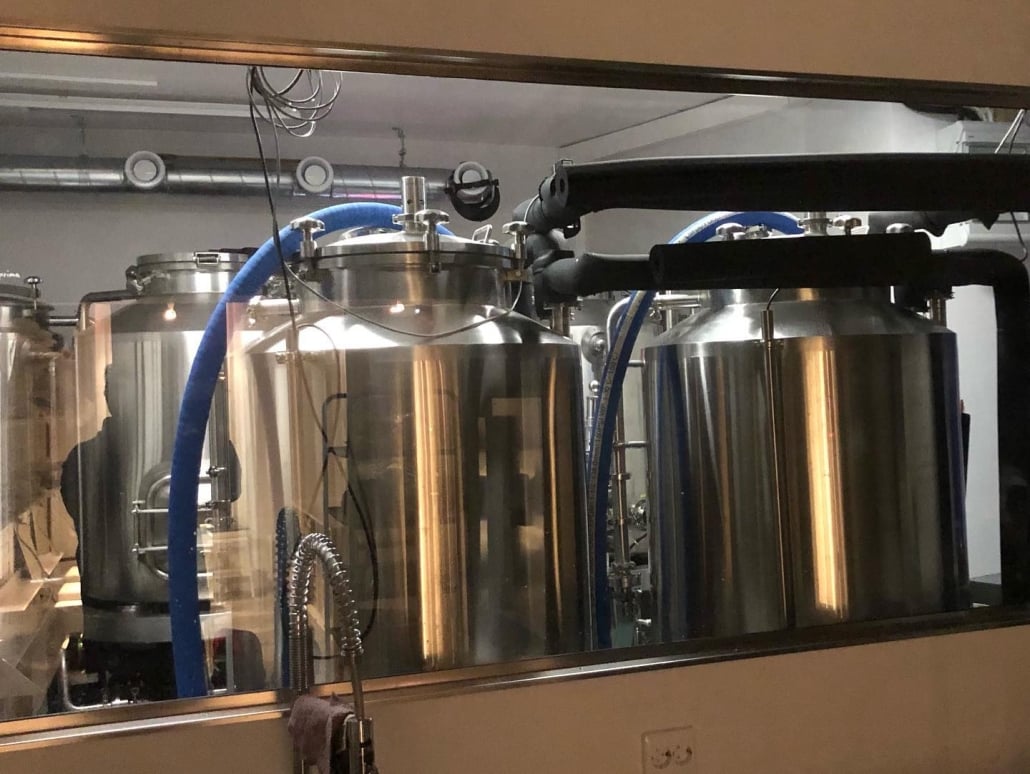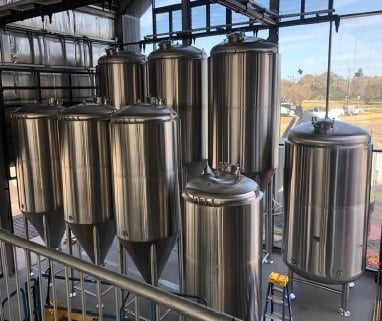beer brewing equipment commercial
Have you ever dreamt of transforming your passion for craft beer into a thriving business? Perhaps you envision a bustling brewery, the aroma of hops wafting through the air, and the satisfaction of serving your unique concoctions to a thirsty crowd. Well, brewing delicious beer on a commercial scale requires specialized equipment – the backbone of your operation. This guide will delve into the world of beer brewing equipment commercial, equipping you with the knowledge to choose the perfect setup for your brewery.

Essential Equipment for Commercial Brewing
Commercial brewing involves a series of intricate steps, each requiring beer brewing equipment commercial. Here’s a breakdown of the essential components you’ll need:
- Mill: The milling process crushes malted barley, releasing the starches that will eventually be converted into sugars for fermentation. There are two main types of commercial mills: hammer mills and roller mills. Hammer mills are faster and more affordable, but can generate more dust and damage the grain. Roller mills offer greater control over the crush size, resulting in a more efficient extraction of sugars.
- Mash Tun/Lauter Tun: This insulated vessel is where the crushed grain (grist) steeps in hot water, converting starches into fermentable sugars. The lauter tun is a specialized mash tun with a false bottom that allows the wort (sugar-rich liquid) to be separated from the spent grains.
- Brew Kettle: The wort is then transferred to the brew kettle where it’s boiled. During this boiling process, hops are added, imparting bitterness, aroma, and flavor to the beer. Some kettles are jacketed, meaning they have a double wall that allows for precise temperature control through steam or glycol.
- Whirlpool Tank: After boiling, the wort is transferred to the whirlpool tank. Here, a tangential inlet creates a whirlpool motion that separates the wort from the hop trub (hop sediment). This clarifies the wort before it enters the fermenter.
- Fermentation Tanks: These are typically large, cylindroconical tanks where the wort is inoculated with yeast. The yeast consumes the sugars and produces alcohol and carbon dioxide, transforming the wort into beer.
- Brite Tanks: After fermentation, the beer is transferred to a brite tank for conditioning and clarification. Here, any remaining yeast sediments settle out, and the beer is carbonated (if desired) before being packaged.
- Kegging System: Kegs are a popular way to store, transport, and dispense beer. A kegging system includes a keg washer, filler, and rinser to keep kegs clean and sanitized.
- Cellar Tank Management System: This computerized system monitors and controls fermentation and conditioning processes in the tanks, ensuring consistent beer quality.
Commercial Beer Brewing Equipment Specifications
When choosing commercial brewing equipment, consider these key factors:
| Factor | Description |
|---|---|
| Capacity | This refers to the volume of beer you can produce in a single batch. Brewery size and production goals will determine the ideal capacity. Options typically range from 1-barrel systems (31 gallons) to large-scale 20+ barrel systems. |
| Space Requirements | Brewery equipment can be quite large. Measure your available space carefully and consider the layout to ensure efficient workflow. |
| Design and Layout | The layout of your equipment will impact brewing efficiency. Plan a layout that minimizes wasted movement and promotes a smooth brewing process. |
| Customization | Some manufacturers offer customizable brewing systems to accommodate specific production needs and brewery layouts. |
Commercial Beer Brewing Equipment: A Cost Breakdown
The cost of commercial brewing equipment varies significantly depending on factors like size, features, and brand. Here’s a general price range to provide a starting point:
| Equipment | Price Range |
|---|---|
| 1-Barrel System | $10,000 – $20,000 |
| 3-Barrel System | $25,000 – $50,000 |
| 7-Barrel System | $50,000 – $100,000 |
| 15-Barrel System | $100,000 – $200,000 + |
Additional Considerations: Installation, operation, and maintenance costs should also be factored into your budget.
Selecting a Commercial Beer Brewing Equipment Supplier
Choosing a reputable supplier is crucial. Here are some tips:
- Research: Investigate different equipment manufacturers and compare features, capacities, and warranties. Look for companies with experience in designing and building systems for breweries of your size and production goals.
- Reputation: Read online reviews and talk to other brewers to get their insights on different suppliers. A company with a strong reputation for quality, reliability, and customer service is a safe bet.
- Get Quotes: Request quotes from several suppliers. Be sure to clearly outline your specific needs and ask detailed questions about the equipment, including its construction materials, warranties, and after-sales support.
- Visit Facilities: If possible, tour the manufacturing facilities of potential suppliers. This allows you to get a firsthand look at the equipment quality and the manufacturing processes.
Commercial Beer Brewing Equipment: Pros and Cons
Brewhouse vs. Unitanks
A critical decision involves choosing between a traditional brewhouse system (separate mash tun and lauter tun) or a unitank system (a single tank that combines mashing and lautering).
Brewhouse Systems:
- Pros:
- Offers more flexibility and control over the brewing process, allowing for customization of mash profiles and lautering procedures.
- Easier to scale production by adding additional kettles.
- Cons:
- Requires more space and equipment compared to unitanks.
- Can be more labor-intensive to operate.
Unitanks:
- Pros:
- Requires less space and is generally more affordable than a brewhouse system.
- Simpler to operate, making them a good option for smaller breweries.
- Cons:
- Offers less control over the brewing process compared to brewhouses.
- Difficult to scale production up due to the single tank design.
Choosing the Right System for You
The ideal brewing system depends on your specific needs and priorities. Consider the following factors:
- Production Volume: If you plan on high-volume production, a brewhouse system might be a better choice for its scalability.
- Space Constraints: For limited space, a unitank system offers a space-saving solution.
- Budget: Unitanks are generally more affordable than brewhouses.
- Experience Level: If you’re new to commercial brewing, a unitank’s simpler operation might be preferable.

FAQ
Q: What permits and licenses do I need to open a brewery?
A: Permitting requirements vary depending on your location. Contact your local licensing board to determine the specific permits and licenses needed for operating a brewery in your area.
Q: How much does it cost to open a brewery?
A: The cost of opening a brewery can vary widely depending on factors like location, size, and equipment. A typical range might be $100,000 to $500,000 or more. It’s crucial to develop a detailed business plan that includes equipment costs, rent, utilities, staffing, and other expenses.
Q: Can I finance commercial brewing equipment?
A: Several lenders offer financing options for breweries. Equipment suppliers may also have financing programs available. Carefully research loan terms and interest rates before making a decision.
Q: What ongoing maintenance is required for commercial brewing equipment?
A: Regular cleaning and sanitation are essential to prevent contamination and ensure consistent beer quality. Specific maintenance tasks will vary depending on the equipment, but generally include cleaning tanks, inspecting hoses and fittings, and lubricating moving parts. Consult the manufacturer’s instructions for a detailed maintenance schedule.
By understanding the different types of commercial brewing equipment, carefully considering your needs, and choosing a reputable supplier, you’ll be well on your way to equipping your brewery for success. Remember, high-quality equipment is an investment that will contribute to producing delicious craft beers and thriving in the competitive brewing industry.













